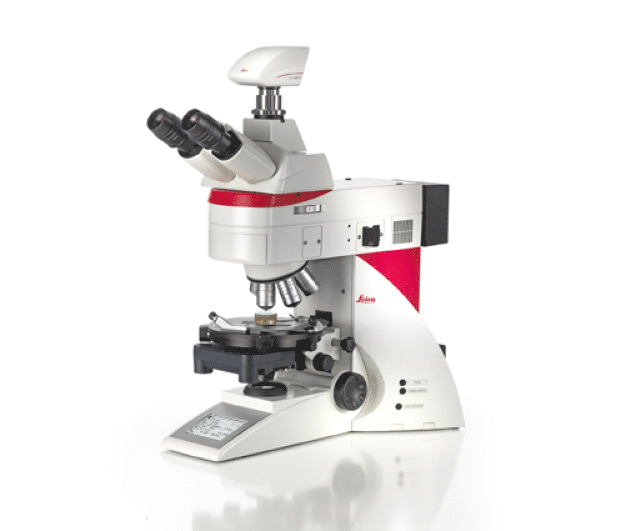Leica Microsystems Launches Fully Coded, Semi-Automated Polarization Microscope
Leica DM4 P for Convenient Investigation of Crystalline Structures
Leica Microsystems launches the Leica DM4 P polarization microscope for the investigation of crystalline structures such as minerals, plastics and polymers, drugs and pharmaceuticals, or pigments and cement. The Leica DM4 P is fully coded and semi-automated, can either be configured with transmitted light axis or incident light axis, as well as with both transmitted and incident light axis, which makes the instrument an ideal tool for all polarization tasks. Users benefit from LED illumination which lights samples homogeneously and at a constant color temperature at all microscope settings. Strain-free optics and objectives guarantee that birefringence stems from the samples, not from the optics. The optional equipment with coded Bertrand lens and magnification changer ensures optimal results for conoscopic observation.
Users can store and recall information due to the coded components of the Leica DM4 P. While changing objectives, illumination intensity and aperture settings are automatically recalled by the Illumination and Contrast Manager. The coded 6-fold nosepiece ensures that the aquired images are automatically calibrated. In addition, the store and recall function in the Leica Application Suite software enables reproducible image settings.
Kay Scheffler, Product Manager at Leica Microsystems, says: “The possibility to combine transmitted and incident light in the Leica DM4 P makes users highly flexible in their applications: Incident light is interesting for all those who measure reflectivity for example in ores or coal. To measure birefrengence, users need transmitted light, for example in inspection of geological thin sections, polymer foils, or drugs. Yet for specific applications such as in research, both are necessary.”
With LED illumination, users can ensure homogeneous lighting of their samples at a constant color temperature, adjusting light intensity fast. Additionally, it saves energy and does not need replacing due to its long lifetime. It emits little heat so that no cooling fan is needed. As a result, it works noiselessly.
To achieve optimal images in polarization microscopy, users need strain-free optical components of the microscope and the objectives. They guarantee that the birefringence originates from the sample, not from the optics. For conoscopy, to investigate interference figures, users need a Bertrand lens module which can be optionally added to the microscope.
Leica Microsystems GmbH
35578 Wetzlar
Germany









